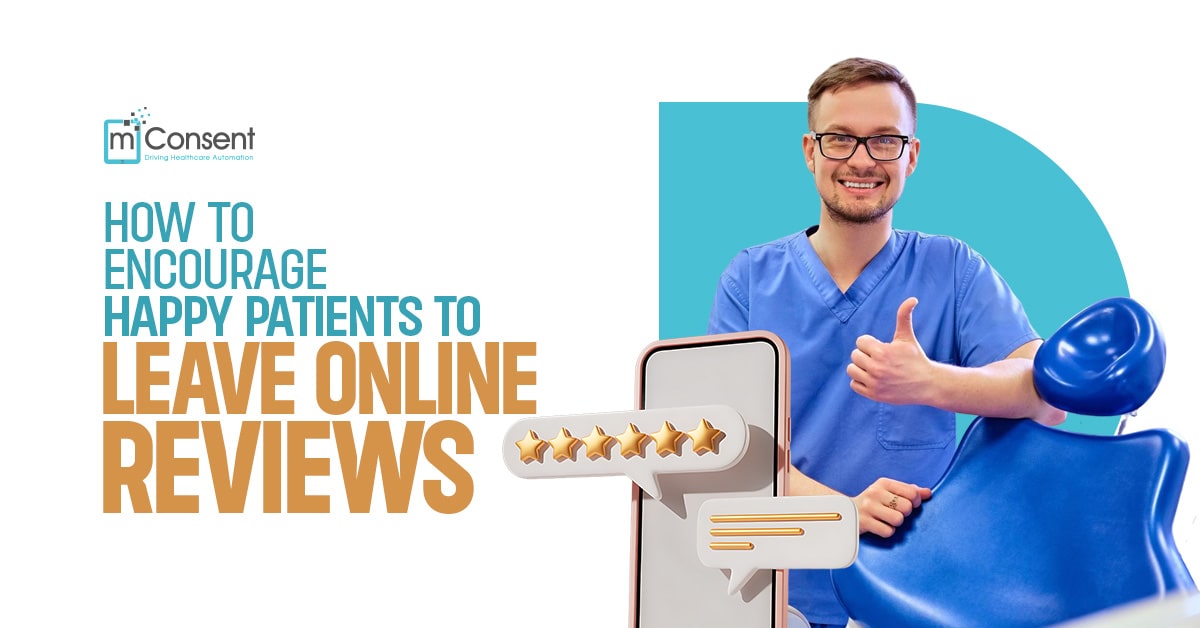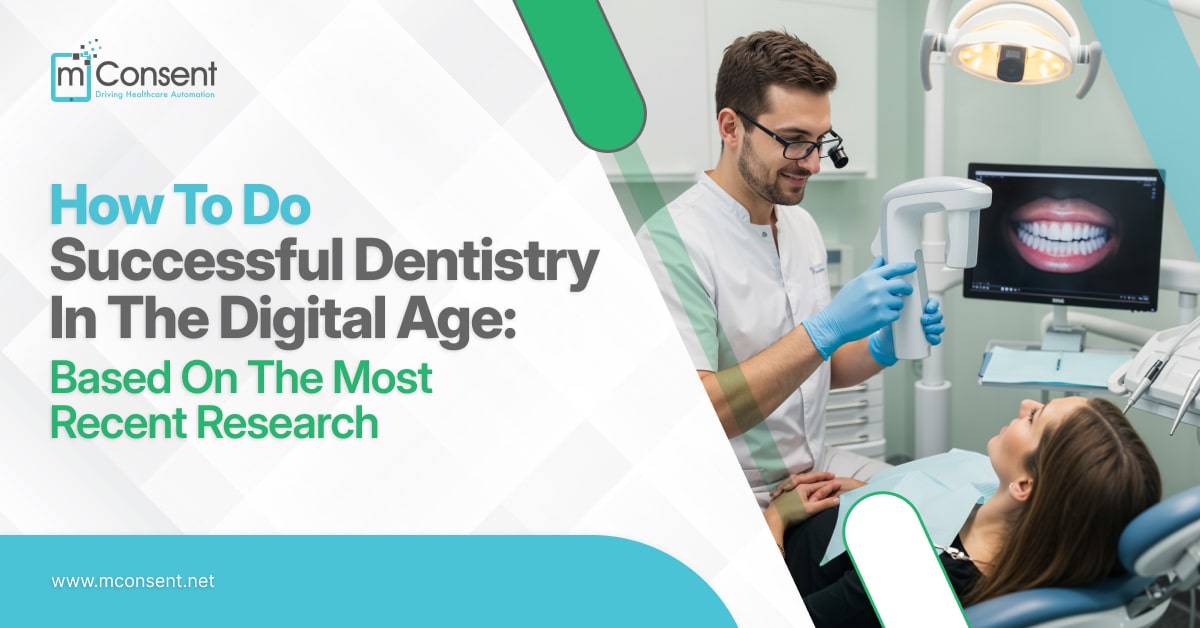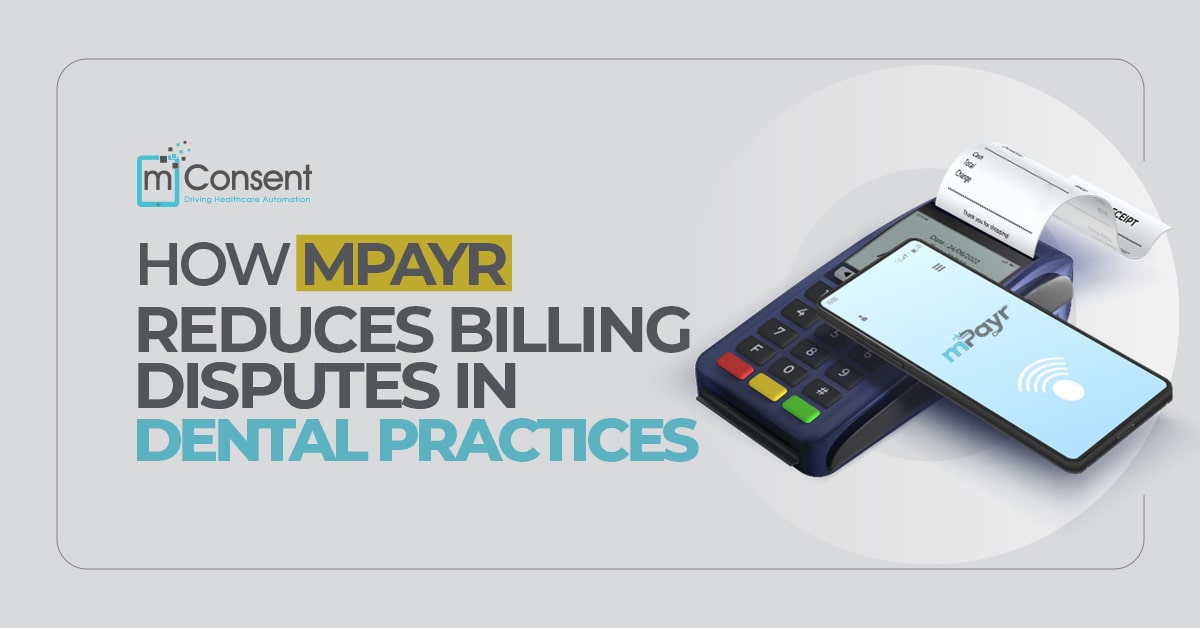If someone had told me a decade ago that our patients would be judging us based on stars on a screen before even meeting us, I might’ve raised an eyebrow. But here we are. In today’s digital first world, a dental office’s online reputation often speaks louder than any word of mouth referral. Whether we like it or not, it’s become the new handshake. The new way patients decide who to trust with their smile.
And while it might sound overwhelming, building that five star reputation doesn’t have to be complicated. In fact, with the right steps and some smart digital tools (yep, I’ll be mentioning mConsent), your practice can start turning satisfied patients into enthusiastic online reviewers without making it feel forced or salesy.
So, how do you get there? Let’s have a look.
Why Your Online Reputation Is Your Most Valuable Asset
Think about the last time you looked for a new restaurant or hotel. Did you read the reviews? Of course you did. Patients are no different when they’re hunting for a new dentist.
Most people aren’t dental experts. They don’t know if your margins are perfect or if your crown prep was textbook. What they do know is how they felt. Were they treated with kindness? Was the process smooth? Did they feel heard?
That’s what reviews reflect. And more than 70% of patients say online reviews are their number one factor when choosing a healthcare provider. A few solid reviews can open the floodgates. On the flip side, one ignored or poorly handled negative review? That can leave a mark.
Bottom line: your online reputation isn’t just a nice to have. It’s one of your most powerful marketing assets.
What Does a 5-Star Reputation Actually Look Like?
A five star dental reputation isn’t about perfection. It’s about consistency. You don’t need 500 glowing reviews. You need real, recent ones that speak to the quality of your patient experience.
Patients are savvy. They can spot fake reviews a mile away. Google can too, by the way. Authenticity matters. So don’t worry if a review sounds a bit mundane — it’s still gold if it’s honest and recent.
And don’t forget about how you respond. A warm “thank you” or a thoughtful reply to a less than perfect review shows you care and that you’re paying attention. That alone can make a potential patient trust you more.
It All Comes Down to the Patient Experience
Here’s the truth: no one leaves a review just because their crown fit well. But they will if the front desk was warm, if the check in process was smooth, or if they didn’t have to fill out five pages of paperwork by hand.
The patient experience starts before they sit in your chair. It begins when they call, book online, or walk in the front door. Everything from wait times to digital forms to how your hygienist greets them matters.
A friend of mine once told me, “I’ll go back to any dentist who has a clean bathroom and doesn’t make me wait.” Sounds simple, right? But it’s often the little things that stick.
Tools like mConsent help eliminate friction by letting patients fill out forms at home or on a tablet. Less waiting, less stress. And that’s what gets remembered.
Automating Reviews Without Sounding Robotic
Let’s be honest. Most patients won’t leave a review unless something was really bad or really amazing. So, what about all the happy but quiet patients in between?
That’s where automation steps in. With mConsent, for example, patients get a gentle nudge to leave a review right after their visit. It feels natural, not pushy. They’re already thinking about their appointment, so they’re more likely to share their thoughts.
You don’t need to keep asking your front desk to remind people or send follow up emails. The system handles it for you, which keeps things consistent and saves your team time.
And here’s the magic part: these review prompts are tailored to feel personal. They’re not those awkward, one size fits all requests that make people roll their eyes.
Where You Should Focus Your Online Reputation Efforts
Google is the heavyweight champ here. Most patients will search your name or practice and decide based on what shows up on your Google Business Profile.
But that’s not the only place that matters. Yelp, Facebook, Healthgrades, and even dental specific platforms like ZocDoc and RateMDs can influence decision making.
The trick is not to spread yourself too thin. Focus on two or three main platforms where your patients are likely to leave feedback, and make sure your presence is active and up to date.
More reviews also mean better visibility. Search engines love high engagement, so more patient feedback helps boost your ranking in local search results.
How to Respond to Reviews Like a Pro
Responding to reviews, especially the not so great ones, can feel tricky. But it’s all about tone and timing.
For positive reviews, a simple “Thank you, we appreciate you” goes a long way. Keep it warm, short, and genuine.
For negative reviews, resist the urge to get defensive. Instead, thank them for the feedback and offer to connect privately. And above all, never include personal health information — HIPAA is still in play, even online.
When handled well, a negative review can actually boost your credibility. It shows you’re listening and willing to grow.
Your Team Plays a Huge Role
You can’t carry the whole reputation load yourself. Your team — from front desk to assistants — shapes the patient experience just as much as you do.
Make sure everyone understands how their tone, follow through, and attention to detail impact reviews. A rushed hygienist or a grumpy receptionist can undo a great filling in a second.
That’s why training matters. Share the importance of online reputation with your team. And if you’re using a system like mConsent, show them how it all fits together. When they understand the why, they’re more likely to buy in.
How mConsent Supports Your Reputation Goals Without You Lifting a Finger
I’ll be real with you — when I first heard about mConsent, I thought it was just another paperless form platform. But it’s more than that. It’s like having an extra team member who’s quietly helping your practice shine.
Here’s how it helps:
- Patients can fill out forms digitally before they arrive. That means fewer headaches and delays at check-in.
- The system automatically sends review requests at the right time — not too early, not too late.
- Real time feedback lets you catch small issues before they become big problems.
- You can see trends, responses, and reputation performance all in one place.
It’s not flashy. It’s just practical. And honestly, that’s exactly what most of us need.
What Smart Reputation Management Actually Delivers
Let’s look at what practices are seeing when they take reputation seriously — especially those using automated tools.
- Patients are more likely to leave reviews when they’re asked gently and consistently.
- More reviews lead to better local search rankings. That means more people find you without expensive ads.
- Staff feels less pressure to remember every step because the system handles it.
- Patients feel more connected, more informed, and more valued.
And when patients feel good, they tell their friends. That’s the ripple effect of a good reputation.
Final Thoughts: You Can’t Control What People Say, But You Can Shape the Experience
No one can guarantee a perfect review every time. But what you can control is how your patients feel throughout their journey with your practice.
If your team is aligned, your systems are smooth, and you’re listening to feedback, your online reputation will naturally follow.
Don’t think of reputation management as one more thing on your to do list. Think of it as the result of everything you already do — just made a little easier with the right tools.
So take a moment to look at your current review process. Ask yourself, “Are we making it easy for patients to share their experience?” If not, maybe it’s time for a smarter approach.
And if you're looking for a tool that fits seamlessly into your workflow and supports your team, mConsent might just be the quiet hero your front desk didn’t know it needed.
FAQ
1. What should I do if I receive a negative review?
Respond promptly and professionally. Thank the reviewer for their feedback and offer to resolve the issue privately. Avoid sharing any personal health information to stay HIPAA compliant. A calm, empathetic response can actually boost your credibility with prospective patients.
2. What if patients don’t feel comfortable leaving reviews?
Make the process easy and optional. With tools like mConsent, patients can receive a simple text or email link—no login required. Also, reassure them that honest feedback (even if not perfect) is appreciated and helps improve the practice.
3. How often should we ask patients for reviews?
Ideally, after every visit—especially when the experience is positive. Automating this process through mConsent ensures that you’re consistently gathering reviews without burdening your front desk staff or over-reminding patients.
""

![HIPAA Release Form – All you Need to Know [Instant Download]](https://mconsent.net/wp-content/uploads/2021/09/HIPAA-Release-Form-All-you-Need-to-Know-Free-Release-Form.jpg)















